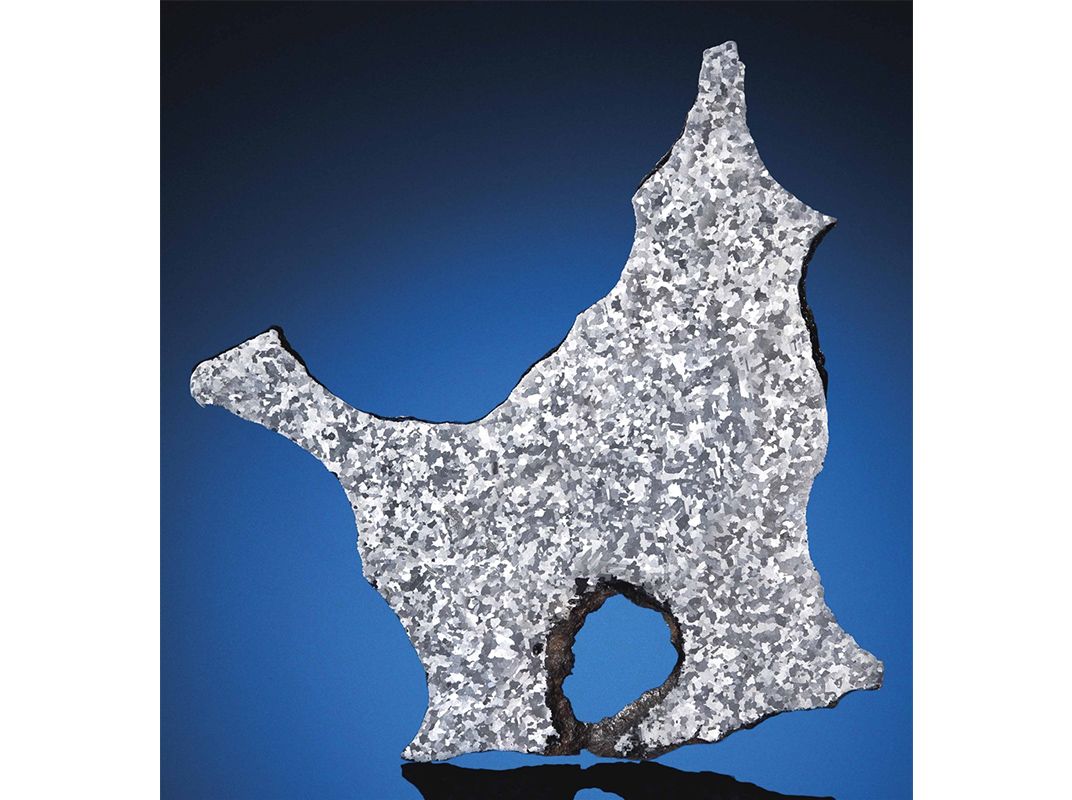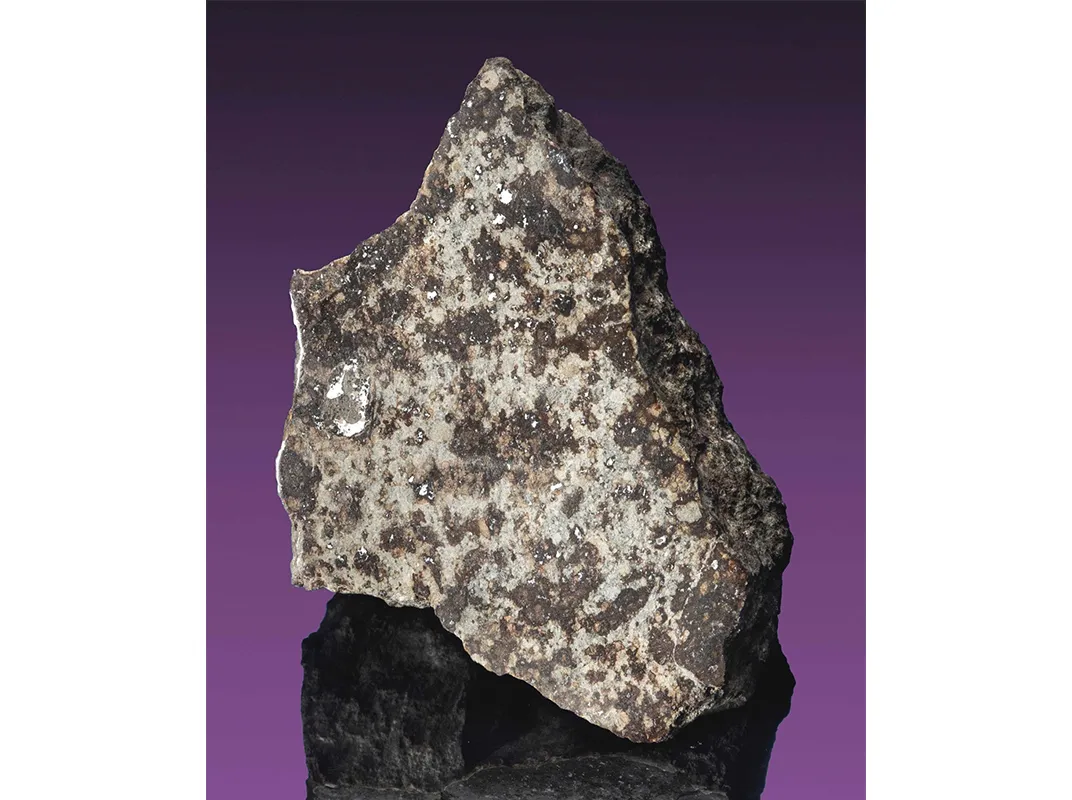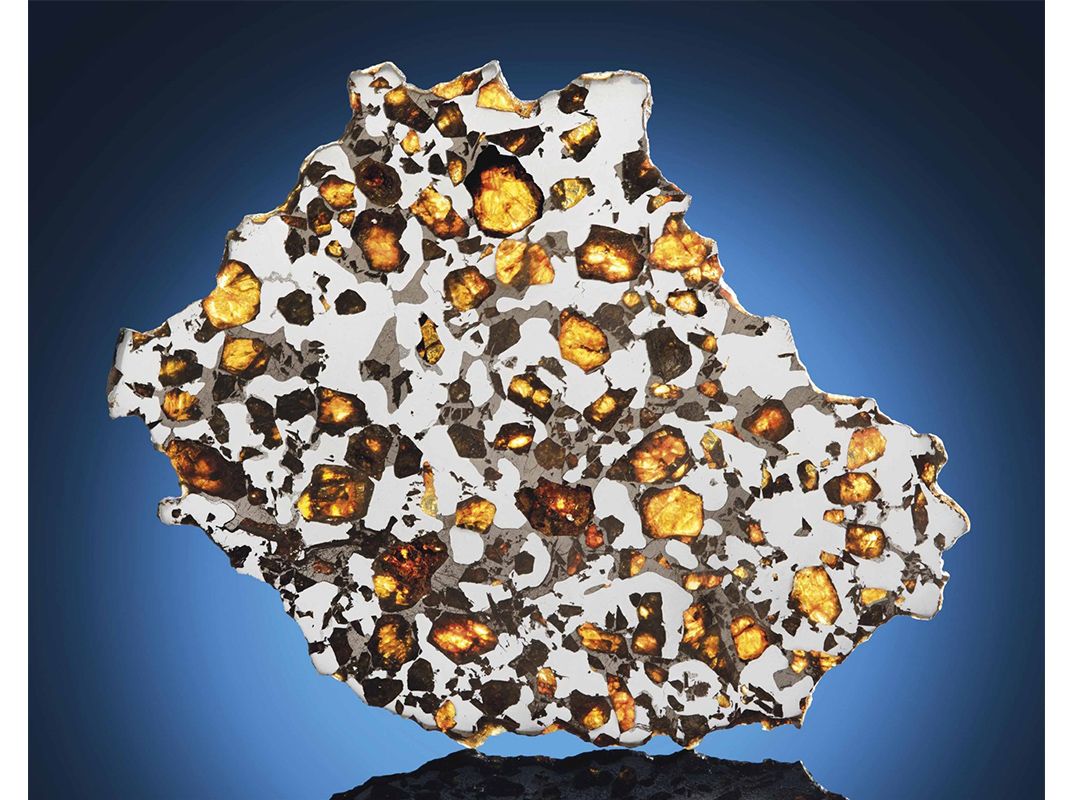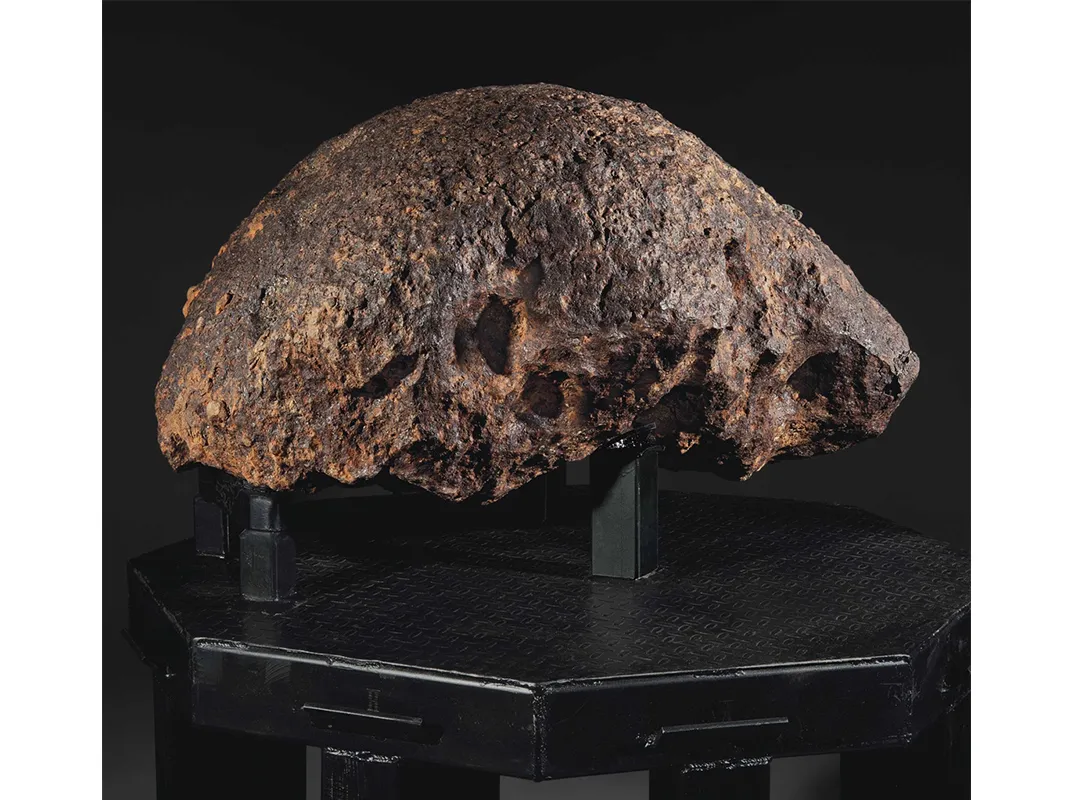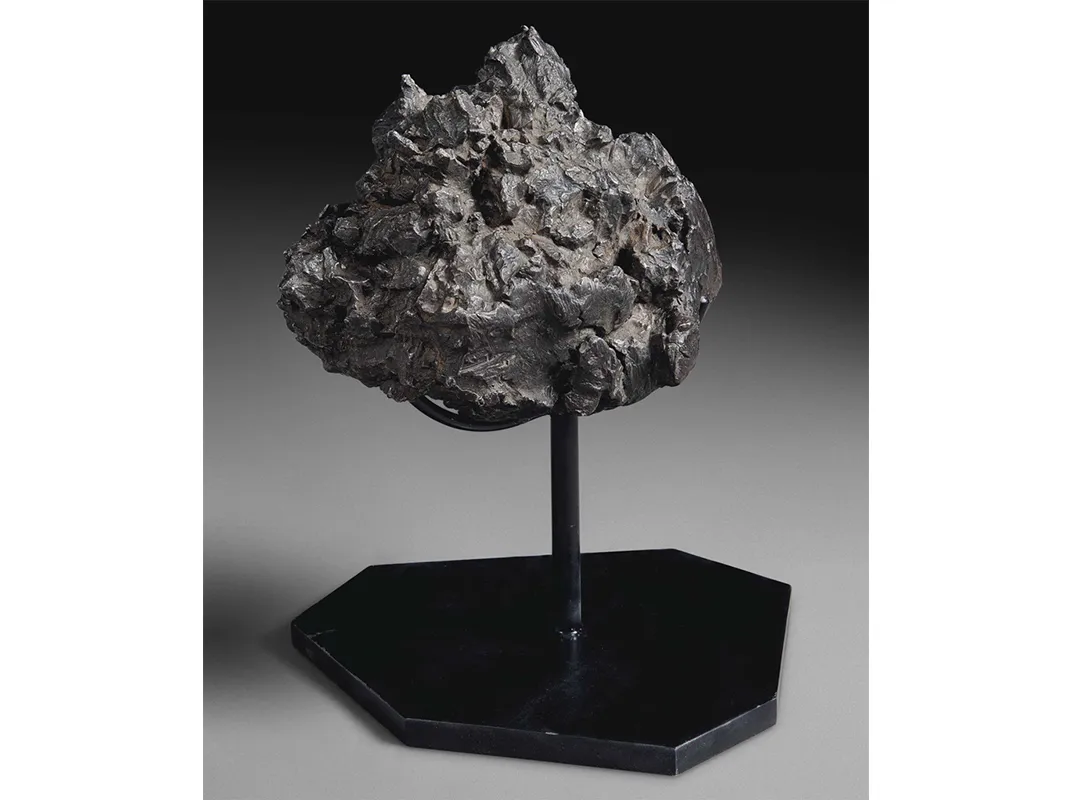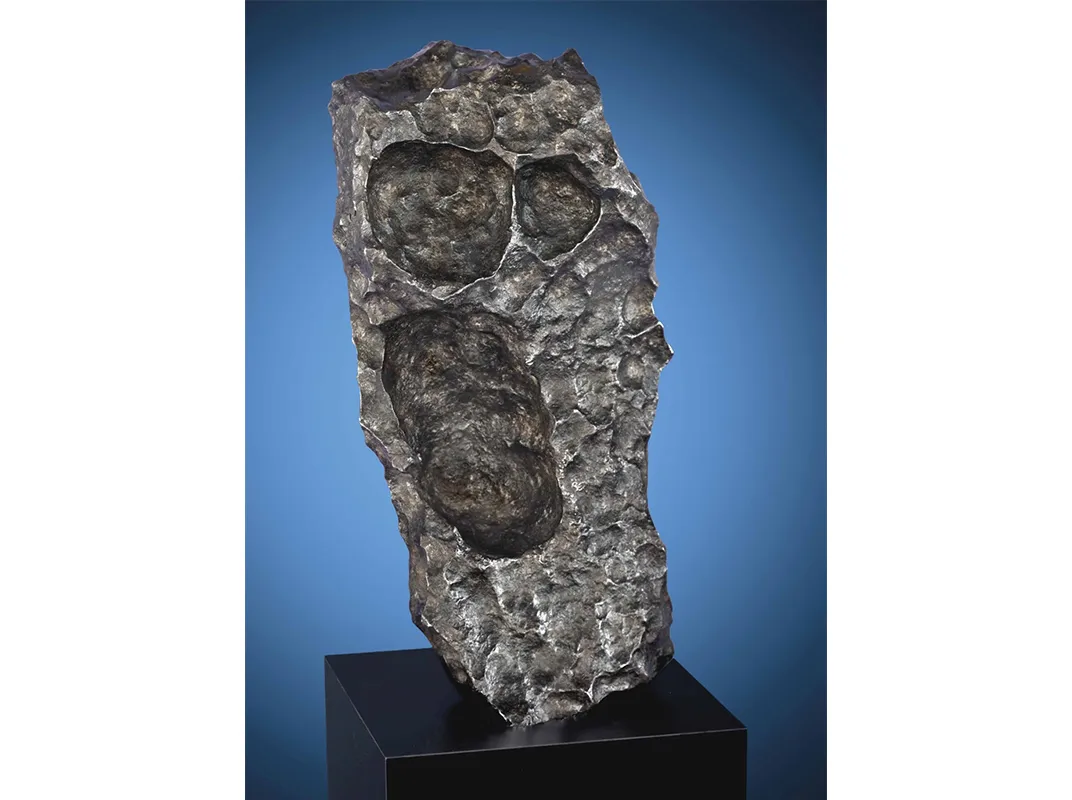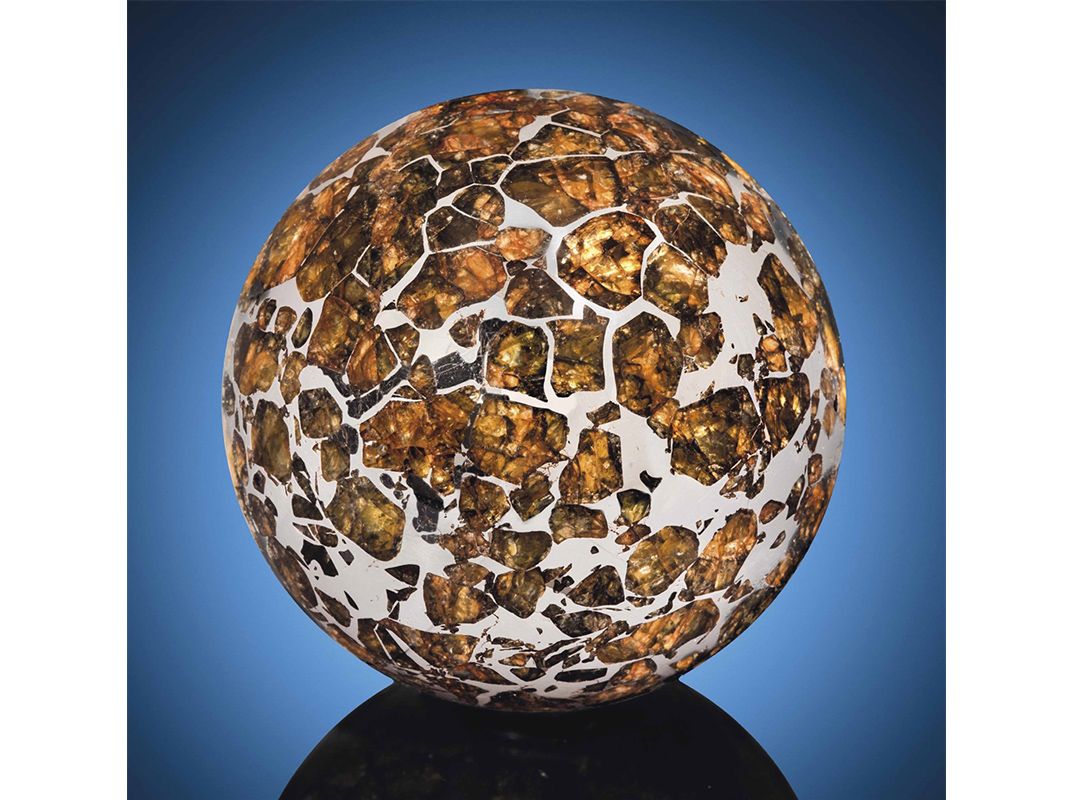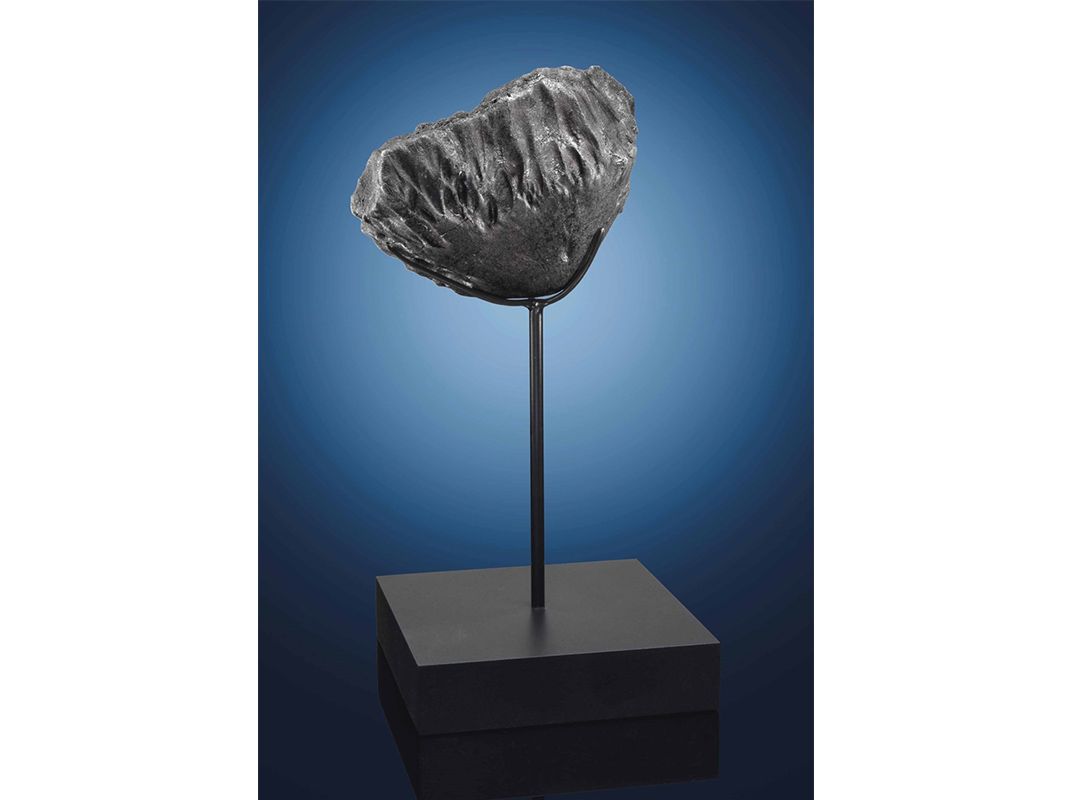Sneak a Peek at the Multi-Million Dollar Meteorites Soon up for Sale
Christie’s is auctioning off dozens of rare and important meteorites, including pieces of the rock that exploded over Russia in 2013
There’s an almost constant shower of debris from space that burns up in Earth’s atmosphere, streaking across the night skies as meteors. Only a select few of the hardiest space rocks make it through to the ground. And those surviving bits of iron and rock are dubbed meteorites.
Scientists and the public alike itch to get their hands on these rare and often unusual pieces of debris from space, making many of them worth a lot of money. On April 20th, everyone will get a chance to own a piece of space when 83 lots of meteorites and related collectibles comes up for sale at Christie's auction house in London.
Micrometeorites are common, and the particles, which usually range in size from a grain of sand to a grain of rice, constantly bombard earth. They even show up in our rain gutters. But big meteorites are very rare, with only about 38,000 collected by humans so far. So the impressive collection at Christie's is expected to net big bucks—likely over 3.8 million dollars.
"What I'm looking for when I value meteorites are the four S's: size, science, source and story," says James Hyslop, the specialist for science and natural history at Christie’s, in a promotional video. And the meteorites in this latest lot do not disappoint.
The sale will include some superstars of the meteorite world, reports Cait Munro for artnet News. One of the headliners is the Valera meteorite—the only space rock known to have struck and killed an animal—which is expected to fetch 6,100 to 9,000 dollars. On October 15, 1972, in Trujillo, Venezuela, locals heard a sonic boom. The next day, Dr. Argimiro Gonzalez went outside to find the neck and clavicle of one of his cows pulverized, with a strange rock sitting next to the carcass.
The most expensive meteorite, according to the auction catalog, is the Brenham Meteorite Main Mass, and is expected to bring in 750,000 to 1.2 million dollars. The 1,433 pound specimen was found in 2005 in Kiowa County, Kansas. It’s considered the largest "oriented" meteor in the world, meaning that instead of spinning through the atmosphere as it tumbled to Earth, it dropped in one position—think of a re-entering Apollo capsule. That left it with a unique parabolic shape, like the St. Louis arch. To top it off, the space rock is studded with the sparkly green olivine minerals.
The real star of the show for many people is another oriented rock, the Chelybinsk Meteorite. This sample is a piece from the most significant meteor-related event in living memory. On February 15, 2013, a 12,000-ton, 62-foot rock began breaking up in the Earth’s atmosphere. It exploded 19 miles above the city of Chelybinsk, Russia, releasing the energy equivalent of 25 Hiroshima blasts. The shockwave damaged 7,200 buildings in six cities and broke windows in 100,000 homes. One thousand people were injured from broken glass, temporarily blinded by the flash, and some even suffered UV burns. It is expected to sell for 280,000 to 450,000 dollars at auction.
Each of the other meteorites have their own unique stories, even if they are not so dramatic. “These meteors give you a sense of wonder, as seeing something extraterrestrial is always very strange,” Hyslop tells the Daily Mail. “It’s a strange thing to hold a piece of another planet or a rock from space as for most of us it is the closet we can get to being there.”
